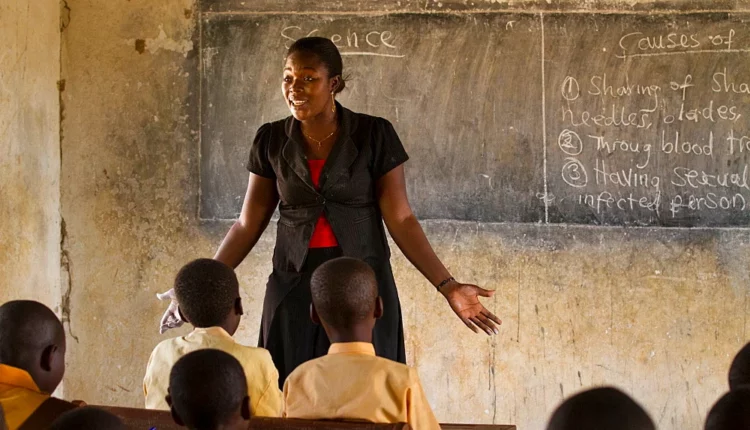Education Matters: How to teach Critical Thinking in our Schools
In an earlier column, “Education for the 21st Century” (Sept 8, 2014), I wrote that businesses feel that – without Critical Thinking Skills – a number of graduates enter the workforce unsuited for high-ability tasks, or for striking out on their own as innovators and potential entrepreneurs.
These days, the abilities of our youth to think creatively to solve problems and to make productive decisions are fundamental goals of education. For schools to achieve those goals, however, teachers must update their own standards and design the appropriate instructional strategies and activities.
A useful classification system I use in training seminars for teachers – to elevate such thinking – was developed by an American psychologist, Benjamin Bloom (1913 – 1999). The system formed the backdrop to a Gifted And Talented Education (GATE) programme I coordinated in the United States.
Bloom defined “Cognitive Domains” into six levels or profiles, categorised as “Lower” and “Higher” levels of thinking. The lower profiles generally consist of 1. Knowledge; 2. Comprehension; and 3. Applications; and the higher profiles: 4. Analyses; 5. Synthesis; and 6. Evaluation.
Knowledge
The possession of pieces of knowledge or information is the basis from which all higher thinking grow. We get information either through direct experience, reading, observing, or listening to others. Making information available to our students starts the thinking process. The ability to remember or recall the information received represents the first profile. For example:
Write the chemical formula for water. Which countries in West Africa speak English? Who wrote the new novel, Americanah? List the major exports/imports of Ghana. Give the definition of tenacity. State the rule for measuring the area of a rectangle. What is 6 x 4 x 2? To answer each of the questions, a student must be able to locate or recall previous knowledge but not necessarily understand that information in other useful ways.
Comprehension
The second profile of thinking is comprehension; which is the ability to understand the information that has been recalled or located. Information is not useful unless it is understood.
Pieces of information are like food items (vegetables, meat, spices, etc.) in a fridge. They are the ingredients for preparing sumptuous meals. But they only clutter up the fridge (and, in some cases, rot) unless we understand how to cook with them. Likewise, pieces of information clutter up a person’s mind unless that information is understood well enough to be used to build or support useful concepts and generalisations.
We talk about some students with good memories because they can recall lots of information, or repeat instructors’ lectures and monologues by heart. The caveat, however, is that human beings are not answering machines; we are thinking beings. Without a clear understanding or appreciation for any piece of information, it cannot be used purposefully. Students pass exams for various theory-based certificates – even at the university level – by filling in the blanks, or ticking away multi-choice exam sheets. The “chew, pour, pass, and forget” syndrome, though, tends to disable students. They may remain dysfunctional, unfulfilled and frustrated when incapable of thinking and applying concepts learned.
The usefulness of the Comprehension profile is that learners have to show that they really understand any given information. Rather than merely repeat definitions or recall what they have read or heard, they must be able to present the information “in their own words”. They have to “own” the knowledge, so to speak. For a simple example: In your own words, define “tenacity”. An additional way to check students’ comprehension is to let them illustrate the notion being learned. For instance: “Give an example of a time when someone showed tenacity”.
It pays to heed the Biblical quote: For all thy getting, get the understanding. Without clear understandings, people are condemned to trail clumsy tracks of thought that do not spark useful connections. When learners really understand a piece of information, it becomes potentially useful knowledge for future deliberations or problem-solving and makes creative applications more likely.
Application
In the Applications Profile, generalisations can be used to solve new problems. A previous experience helps one to avoid errors and estimate possibilities in new situations. An example in English: Having learned from the previous profiles that the plural forms of nouns ending in “y”, like a lady is ladies, make the following imaginary words plural: “tady” and “paby”.
Knowing that an “honourable villain”, “A damned saint”, “a mortal paradise” [from William Shakespeare’s “Romeo and Juliet”] are oxymorons, identify that literary device in the following: “It was a bitter sweet experience.”
In Mathematics, let’s say, 6 boys bought 4 pens per person at 2 cedis each, how much was spent altogether? [A learner will have to recall 6 x 4 x 2, learn from the earlier profiles, and apply the multiplication principle to arrive at 48 cedis, in a real-life situation.]
In Science: Knowing that hot air expands, what is likely to happen to balloons exposed to the sun during weddings and birthday celebrations?
The Applications Profile serves as the launch platform before higher-level thinking can happen. Through that profile, students have a clear understanding of information or knowledge they can apply in new contexts. Only then can they be expected to successfully navigate more challenging intellectual or real-world landscapes to achieve complex, non-convergent feats. [The higher cognitive domains of Analyses, Synthesis, and Evaluation are the subjects for next week.


